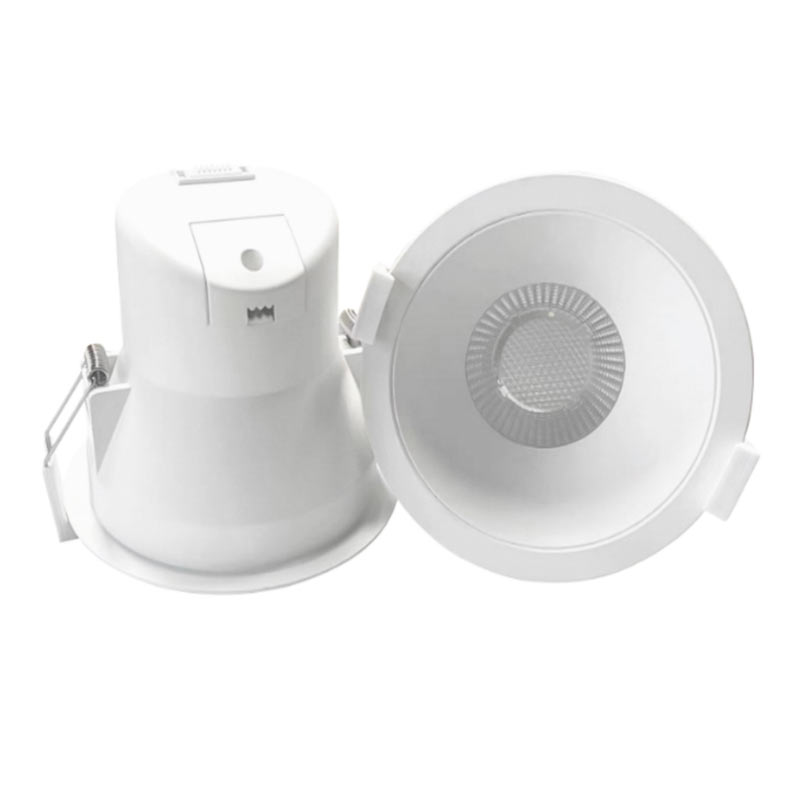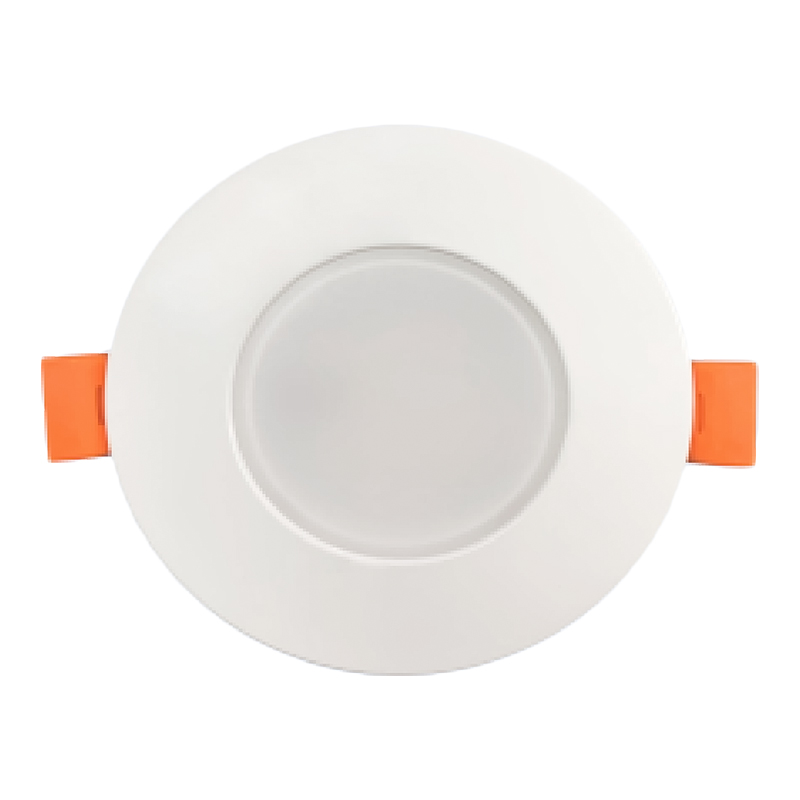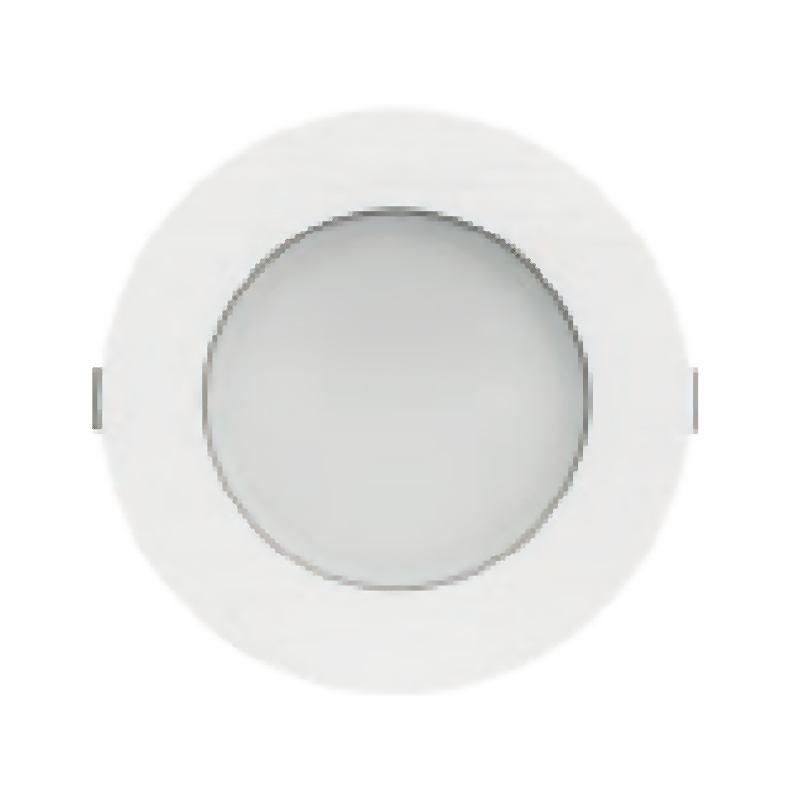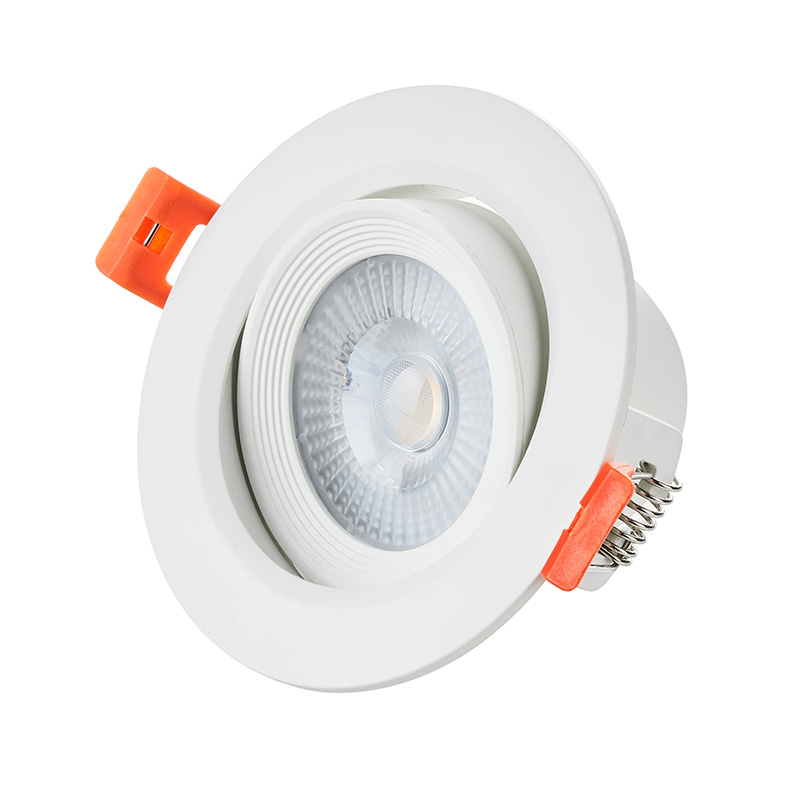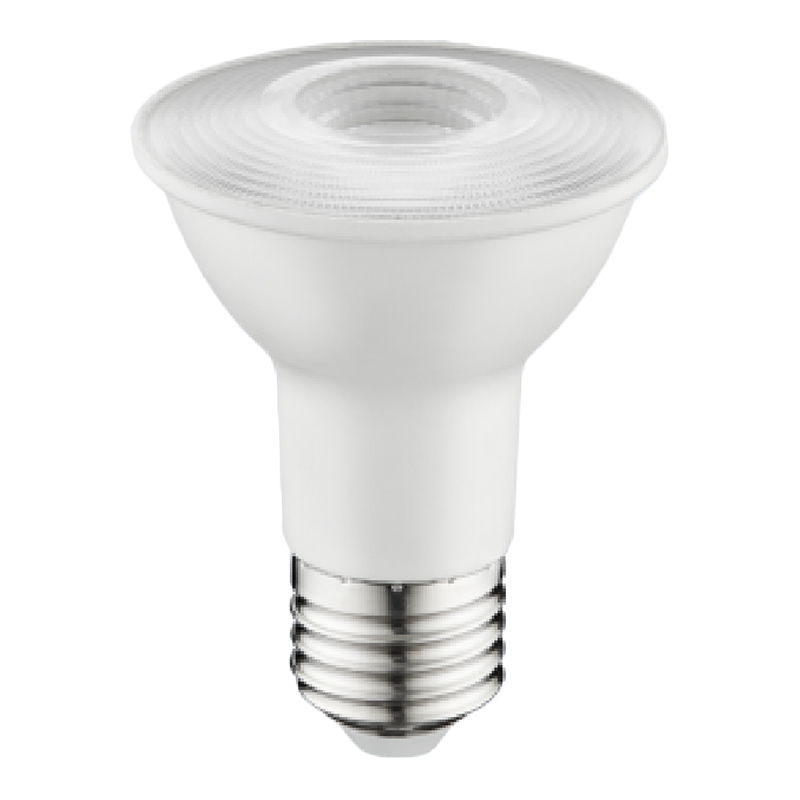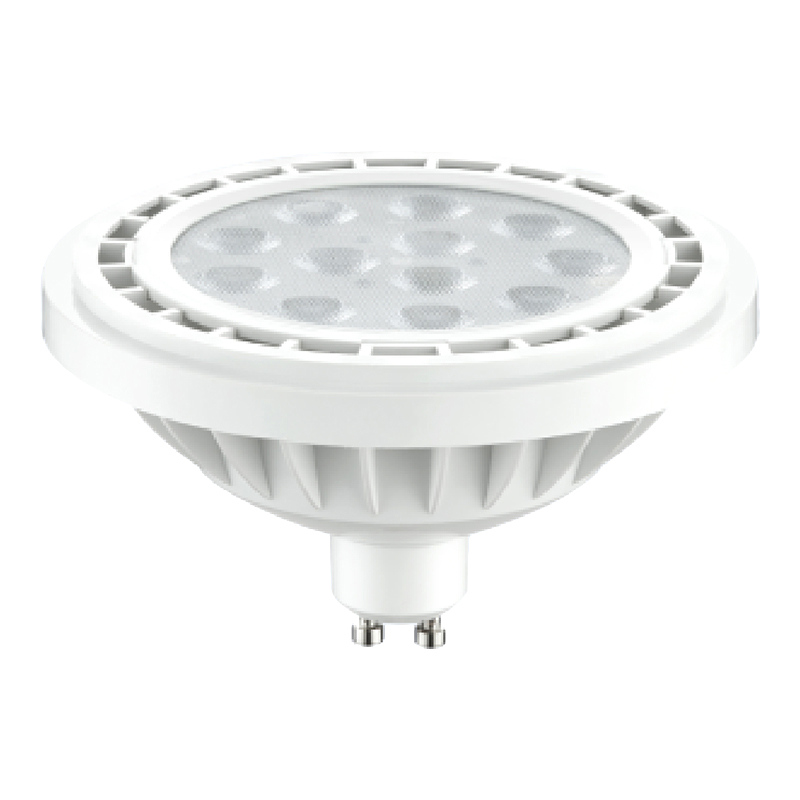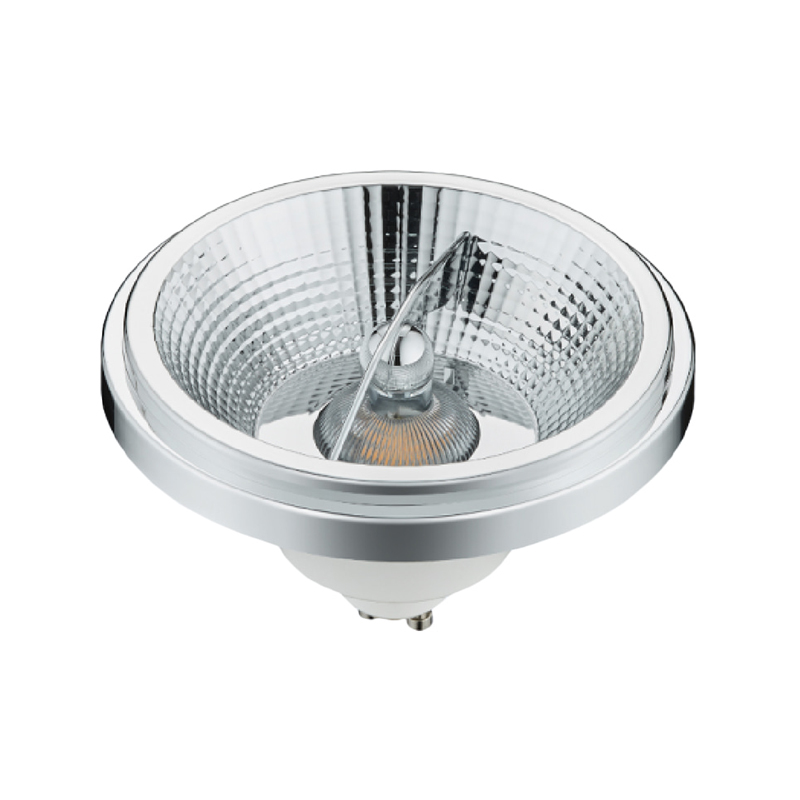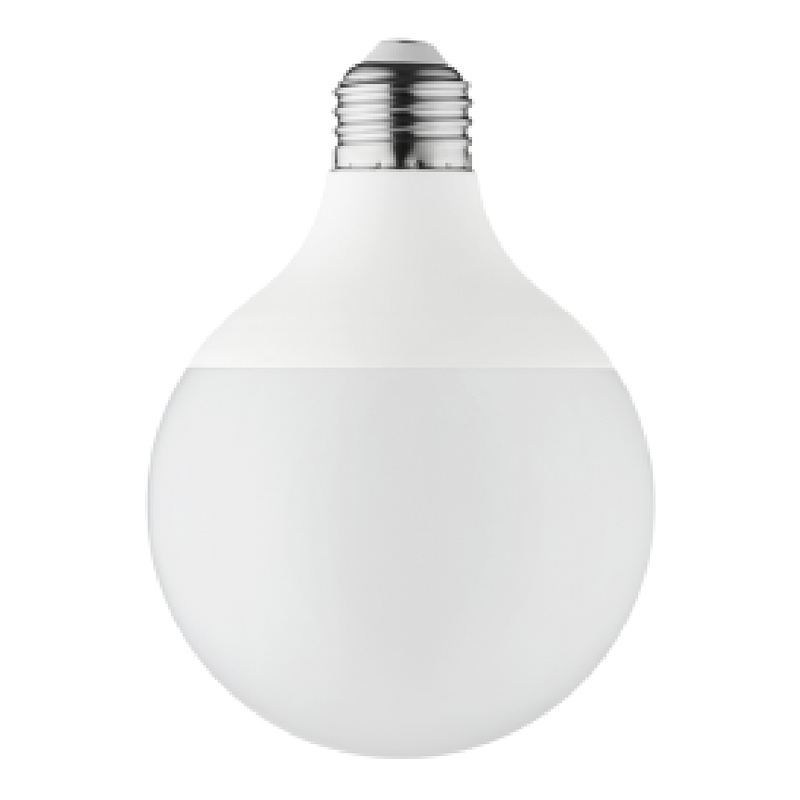Introduction to LED Ceiling Lights LED ceiling lights have become a popular choice for modern homes,...
Introduction to LED Ceiling Lights
LED ceiling lights have become a popular choice for modern homes, thanks to their energy efficiency, long lifespan, and versatile designs. As more homeowners seek sustainable and cost-effective lighting solutions, LED lights offer the perfect balance of style and functionality. Unlike traditional incandescent bulbs, LED lighting consumes far less energy, lasts significantly longer, and provides superior brightness without compromising on aesthetics.
Over the past decade, LED technology has evolved, offering various styles, color options, and features that cater to diverse home design needs. Whether you're looking to brighten up a cozy living room or add a stylish focal point to a dining area, there is an LED ceiling light to suit your space. Additionally, their adaptability and ability to integrate with smart home systems have made them even more desirable.
Types of LED Ceiling Lights
When it comes to LED ceiling lights, there are several options to choose from, each designed to fit different room layouts, ceilings, and lighting needs. Whether you’re aiming for a minimalist look, a cozy ambiance, or a statement piece, the variety of LED ceiling lights available today makes it easy to find the perfect match for your space.
Flush Mount LED Lights
Flush mount LED lights are one of the most common and practical options for many homes, especially in spaces with low ceilings. These lights sit directly against the ceiling, offering a clean and streamlined appearance without taking up extra space. Flush mount fixtures are available in a wide range of designs, from simple, functional lights to more decorative models with intricate detailing.
Suitability: Flush mount lights are perfect for bedrooms, hallways, bathrooms, and any area where headroom might be limited. Their compact design makes them an excellent choice for small or medium-sized rooms.
Design Ideas: For a modern look, consider a sleek, circular flush mount light with a matte finish. Alternatively, for a more traditional feel, opt for a design with frosted glass or a vintage-inspired pattern. Many flush mount LED lights also offer dimming capabilities, allowing you to adjust the brightness according to the mood.
Semi-Flush Mount LED Lights
Semi-flush mount lights are similar to flush mounts but feature a slight gap between the light fixture and the ceiling. This design provides a more decorative appearance while still being ideal for rooms with standard or slightly lower ceilings. The added space between the light and the ceiling allows for more airflow and a bit of visual drama, making them a versatile lighting choice.
Suitability: These lights are ideal for living rooms, dining areas, and entryways, where a bit more style is desired without overwhelming the space. They work particularly well in rooms with mid-height ceilings, offering the perfect balance between style and functionality.
Design Ideas: Semi-flush mounts are often designed with decorative elements such as metal accents, glass shades, or fabric materials. If you're going for a chic, contemporary look, choose a fixture with a brushed nickel finish and geometric shapes. For a more rustic vibe, a semi-flush mount with a wood or wrought iron design could complement your décor.
Recessed LED Lights (Downlights)
Recessed lighting, also known as downlighting, is a sleek and modern lighting solution that hides the fixture in the ceiling, creating a seamless and unobtrusive look. These lights are embedded into the ceiling, with the light source directed downwards, providing uniform illumination throughout the space. Recessed LED lights are often used for ambient lighting or task lighting.
Suitability: Recessed lights are ideal for living rooms, kitchens, bathrooms, and hallways, particularly when you want a minimalist and clean aesthetic. They are also perfect for rooms with high ceilings or vaulted ceilings where other types of fixtures might seem out of place.
Design Ideas: Recessed lighting can be installed in rows or clusters to create a symmetrical look or to highlight specific areas, such as artwork, a kitchen island, or a reading nook. These fixtures come in various sizes and finishes, allowing you to choose the perfect look for your space. For more advanced setups, dimmable recessed LED lights provide flexibility, allowing you to control the lighting intensity depending on the time of day or activity.
Pendant LED Lights
Pendant LED lights are often used as statement pieces, offering a bold focal point in a room. These lights hang from the ceiling by a cord, chain, or rod, making them ideal for spaces where you want to direct light downward, such as over kitchen islands, dining tables, or entryways. Pendant lights can vary greatly in size, style, and function—from small, simple designs to large, chandelier-like fixtures.
Suitability: Pendant lights are best used in kitchens, dining areas, living rooms, or home offices, where their ability to direct light in a specific area can be most effective. Depending on the style, pendant lights can add an elegant, industrial, or modern touch to your décor.
Design Ideas: A single large pendant light works well in a minimalist kitchen or a high-ceilinged living room. For a more dramatic effect, try clustering several smaller pendant lights in a line above a dining table or island. Pendant lights are available in various styles, including sleek, industrial metal designs, or softer, more artistic glass globes.
LED Track Lighting
Track lighting offers maximum flexibility by allowing you to adjust the direction and positioning of each individual light along a mounted rail or track. With this versatility, track lighting can illuminate large areas or highlight specific features in a room, such as artwork or architectural details.
Suitability: Track lighting is ideal for spaces that require directional lighting, such as kitchens, art galleries, home offices, and studios. It’s also a great option for rooms with high ceilings, where you might want to adjust the angle of the lights to ensure even illumination throughout the space.
Design Ideas: Choose a modern, sleek track lighting system for a contemporary, urban feel. Alternatively, for a more rustic or industrial look, opt for track lights with exposed bulbs and raw metal finishes. You can even customize the layout of track lighting to suit your room's specific lighting needs, adjusting the fixture’s angle to highlight features like shelves or paintings.
Benefits of LED Ceiling Lights
LED ceiling lights are widely regarded as one of the most efficient, reliable, and versatile lighting options available today. Whether you’re looking to reduce your electricity bill, enhance the ambiance of your home, or make an eco-conscious choice, LED lights provide a variety of benefits that make them a superior lighting solution.
Energy Efficiency
One of the primary reasons LED ceiling lights have gained such widespread popularity is their exceptional energy efficiency. Compared to traditional incandescent bulbs and even compact fluorescent lamps (CFLs), LEDs use a fraction of the energy to produce the same amount of light.
How it works: LED lights convert a higher percentage of electrical energy into light, with less energy wasted as heat. This makes them far more efficient than older lighting technologies. For instance, a typical 12W LED bulb can produce as much light as a 60W incandescent bulb, which translates into substantial energy savings.
Energy Savings: Over time, the difference in energy consumption can lead to significant savings. For example, replacing 10 incandescent bulbs with LED bulbs can reduce your energy use by 80-90%. This can amount to hundreds of dollars saved annually, depending on how often the lights are used. Additionally, LEDs don’t require frequent replacements, which means fewer bulbs in landfills and less overall waste.
Long Lifespan
Another key benefit of LED ceiling lights is their impressive lifespan. LEDs typically last 25,000 to 50,000 hours—far longer than incandescent bulbs (which last around 1,000 hours) or CFLs (which last about 8,000 hours). This longevity reduces the need for frequent bulb replacements, making them a hassle-free lighting solution for any room.
How it benefits you: With such a long lifespan, you’ll spend less time and money replacing bulbs, and you won’t need to worry about finding replacement bulbs as often. This also means that over the course of their lifetime, LED lights can save you a significant amount of money—especially in high-use areas like kitchens, hallways, and living rooms.
Cost-Effectiveness: While the initial cost of LED lights may be higher than that of traditional bulbs, the long-term savings on energy bills and the reduced frequency of replacements more than make up for the upfront cost. In fact, studies show that you can recover the cost of an LED bulb in as little as 6 months, depending on usage.
Cost Savings
LED ceiling lights may have a higher upfront cost compared to traditional incandescent or CFL bulbs, but they offer substantial savings over time. The combination of energy efficiency and long lifespan means that LED lights provide an excellent return on investment (ROI) for homeowners.
Real-world example: If you were to replace all the lights in your home with LED ceiling lights, you could save up to 80% on your annual energy costs. For example, a 12W LED light that replaces a 60W incandescent bulb will use 5 times less energy, leading to monthly savings on your electricity bill. Multiply this across multiple fixtures, and the savings add up quickly.
In addition to energy savings, the durability of LEDs also reduces maintenance costs. Because they last so much longer than traditional bulbs, you won’t have to worry about purchasing replacements nearly as often. In some cases, the savings from not needing replacements for up to 10 years or more can be significant, especially for larger homes.
Environmentally Friendly
LED lights are one of the most eco-friendly lighting options available. They help reduce your carbon footprint in multiple ways, starting with their low energy consumption. By using less energy, LEDs help lower greenhouse gas emissions associated with electricity production.
Non-toxic: Unlike CFLs, LEDs do not contain harmful chemicals like mercury, which can pose a danger to both the environment and human health if disposed of improperly. LED lights are also fully recyclable, which further reduces their environmental impact.
Lower Carbon Footprint: The reduced energy consumption and longer lifespan of LED lighting contribute to a greener home by decreasing the overall demand for electricity, which, in turn, reduces the carbon emissions from power plants. According to studies, LED lights emit up to 80% less CO2 than incandescent lighting, making them an ideal choice for environmentally conscious consumers.
Brightness and Color Temperature Options
LED ceiling lights offer a wide range of brightness levels and color temperatures, making them highly adaptable to various settings. Whether you need soft, warm lighting to create a cozy atmosphere or bright, cool lighting for task-oriented spaces, LEDs can meet your specific needs.
Brightness (Lumens): LED lights are measured in lumens (lm), which indicates the amount of light they produce. Higher lumens equal brighter light. This gives you more control over the lighting in your home, allowing you to choose the right brightness for each room. For example, 800 lumens are ideal for general room lighting, while 1,600 to 2,000 lumens are better suited for kitchens or workspaces.
Color Temperature (Kelvin): LED lights are available in a variety of color temperatures, measured in Kelvin (K), which determines the warmth or coolness of the light.
- Warm White (2700K-3000K): Creates a cozy, inviting ambiance perfect for living rooms, bedrooms, and dining areas.
- Cool White (4000K-5000K): Provides bright, neutral light ideal for kitchens, bathrooms, and office spaces.
- Daylight (5000K-6500K): Mimics natural daylight, making it suitable for spaces where clear visibility is needed, like work areas or garages.
With these options, you can tailor your lighting to match the specific needs of each room, enhancing both functionality and comfort.
Dimmability
Many modern LED ceiling lights come with dimming capabilities, allowing you to adjust the light intensity to suit your needs. This feature is particularly useful in living spaces, dining rooms, or bedrooms, where you may want the flexibility to set the mood with softer lighting or brighten the room for tasks or reading.
How dimming works: Dimmable LED lights are compatible with most dimmer switches, and some even work with smart dimmers that can be controlled through apps or voice assistants. Dimming LED lights not only enhances the ambiance but also contributes to energy savings, as you can reduce the brightness when full light is not necessary.
Creating the right mood: Whether you’re hosting a dinner party, relaxing after a long day, or preparing for a cozy movie night, dimmable LED ceiling lights help create the perfect atmosphere. By adjusting the lighting to match your activities, you can maximize comfort and energy efficiency.
Smart LED Lights
One of the newest trends in LED lighting is smart technology. Smart LED lights allow you to control your ceiling lights through apps, voice commands, or smart home assistants like Amazon Alexa or Google Assistant. This added layer of control can make your home even more convenient and efficient.
Convenience and control: With smart LED ceiling lights, you can set schedules, change the color temperature, adjust brightness, and even sync your lights with music or movies. This feature makes smart LED lights ideal for tech-savvy homeowners who want to automate their lighting for comfort and energy savings.
How to Choose the Right LED Ceiling Light
Choosing the right LED ceiling light involves considering several factors, from room size and ceiling height to personal style and desired lighting effects. While the energy efficiency and longevity of LED lights are key selling points, the right choice can also enhance the ambiance, functionality, and overall aesthetic of your home.
Room Size and Ceiling Height
The first thing to consider when selecting LED ceiling lights is the size of the room and the height of your ceiling. The lighting needs of a spacious living room differ significantly from those of a compact hallway, and the height of your ceiling plays a critical role in determining the ideal fixture type.
For Low Ceilings: In rooms with lower ceilings (typically 8 feet or less), it’s best to choose fixtures that won’t interfere with headroom. Flush mount and semi-flush mount LED lights are excellent options as they sit close to the ceiling, providing ample illumination without taking up much vertical space.
For High Ceilings: For rooms with higher ceilings (12 feet or more), you may want to consider pendant LED lights or track lighting, which can provide better light distribution and create a dramatic visual impact. Pendant lights, in particular, can be adjusted in height to suit the specific dimensions of your space.
For Standard Ceilings: For rooms with average ceiling heights (9-10 feet), you have more flexibility in choosing fixtures. Recessed LED lights, semi-flush mounts, and even stylish pendant options can all work well in these spaces, depending on your design preferences.
Brightness (Lumens)
The brightness of your LED ceiling light is measured in b, not watts. While incandescent bulbs rely on wattage to measure brightness, LED lights use lumens to quantify how much light is emitted. Choosing the right lumen output depends on the size of the room, the function of the space, and how much light is required.
Recommended Lumens for Different Rooms:
Living Room: For general lighting, a living room may require between 1,500 and 3,000 lumens, depending on its size. If you want more focused light for reading or tasks, aim for higher lumens.
Kitchen: Kitchens require bright light for cooking and meal prep, typically between 3,000 and 6,000 lumens. You may also want to use additional task lighting, such as under-cabinet lights.
Bedroom: Bedrooms typically require around 1,000 to 2,500 lumens. Consider using a dimmable LED ceiling light for creating a soft, relaxing atmosphere at night.
Bathroom: Bathrooms need bright, even lighting, especially around mirrors. Aim for between 2,000 and 4,000 lumens.
Hallways and Entryways: For these areas, 1,000 to 2,000 lumens are usually sufficient for soft illumination without overwhelming the space.
Keep in mind that different activities will require varying levels of brightness. If you plan to use the light for reading or detailed tasks, you’ll need higher lumens. For more ambient, relaxed settings, lower lumens will create a cozy, inviting atmosphere.
Color Temperature (Kelvin)
Choosing the right color temperature is essential for setting the mood and function of a room. LED ceiling lights are available in various color temperatures, which are measured in Kelvin (K). The color temperature determines the warmth or coolness of the light and can impact the ambiance of a room.
Color Temperature Options:
Warm White (2700K-3000K): This range produces a soft, yellowish light that creates a cozy, inviting atmosphere. It’s perfect for living rooms, bedrooms, dining rooms, and any area where relaxation is key.
Cool White (4000K-5000K): Cool white lighting offers a neutral, bright light that is ideal for kitchens, bathrooms, and home offices. It provides a clean, clear look, making spaces feel more spacious and airy.
Daylight (5000K-6500K): Daylight bulbs mimic natural sunlight and are perfect for task lighting in kitchens, garages, and workspaces. This cooler, bluish light provides excellent clarity and visibility, making it ideal for areas where you need to focus and be alert.
Consider how the color temperature will complement the room’s function. For a relaxing space like a bedroom, warm white is often preferred, while a cool white or daylight bulb might be best for kitchens or workspaces where you need bright, clear light.
Style and Design
LED ceiling lights come in an array of styles, from sleek and modern to ornate and traditional. The right fixture should complement the existing design and décor of the room while providing adequate lighting. Consider the overall vibe you want to create in each space.
Modern and Minimalist: For a clean, modern look, opt for fixtures with simple lines and neutral finishes. Flush mount LED lights with matte or brushed metal finishes work well in minimalist settings. If you’re after a contemporary feel, consider recessed lighting or track lighting for a streamlined, industrial vibe.
Traditional and Classic: For more traditional or rustic spaces, look for semi-flush mount LED lights with frosted glass shades or vintage-style pendant lights with intricate detailing. These fixtures often feature warm metallic tones or glass elements that add a touch of elegance.
Statement Lighting: If you want your ceiling light to make a bold statement, choose pendant LED lights in oversized or sculptural designs. Clustered pendants over a dining table or island create a striking focal point and can elevate the overall design of the room.
Transitional Style: If you prefer a blend of modern and traditional, semi-flush mount fixtures with a combination of metal and glass or wood and metal are a great option. These fixtures provide a balance between contemporary and classic aesthetics, making them versatile for various décor styles.
Dimmability and Control Options
One of the key benefits of LED ceiling lights is their ability to be dimmed, allowing you to adjust the brightness to suit your needs. If you want greater control over your lighting, look for dimmable LED lights. These can be paired with compatible dimmer switches, so you can create the right ambiance, whether you’re hosting a party or winding down at night.
For added convenience, many LED ceiling lights now come with smart capabilities. Smart LED lights can be controlled via voice commands, smartphone apps, or home automation systems, allowing you to adjust the light color, brightness, and even set schedules without leaving your seat.
Smart Lighting Features:
Voice Control: Integrate with Alexa, Google Assistant, or other voice-controlled devices to turn lights on/off or change settings with simple voice commands.
App Control: Use a dedicated smartphone app to control the brightness, color, and even schedule lighting for different times of day.
Customizable Scenes: Set up lighting scenes that adjust the ambiance automatically depending on the time of day or activity.
Energy Efficiency Ratings
When choosing LED ceiling lights, it's essential to check for energy efficiency ratings. Look for bulbs that are Energy Star certified, as these meet strict guidelines for energy efficiency and performance. LED lights with this certification use less energy, save money, and help reduce your carbon footprint.
Choosing Energy Star-rated products ensures that you are getting high-quality, long-lasting fixtures that will deliver the best results while keeping energy costs down.
Installation Tips for LED Ceiling Lights
Installing LED ceiling lights is a relatively straightforward process, especially for basic fixtures like flush mounts and semi-flush mounts. However, it’s essential to follow the proper safety procedures and installation techniques to ensure that your lights function correctly and safely.
Safety Precautions
Before you begin installing LED ceiling lights, it’s important to take the necessary safety precautions to avoid electrical hazards and injuries.
- Turn Off the Power: Always switch off the power at the circuit breaker before working with electrical components. This is the most crucial step to ensure your safety during the installation process. Use a voltage tester to confirm that the power is off before touching any wires.
- Use Proper Tools: Make sure you have the right tools for the job, including a screwdriver, wire cutters, wire strippers, a voltage tester, and a step ladder if necessary. It’s also advisable to wear safety glasses and gloves to protect your hands and eyes while handling wiring and light fixtures.
- Check Wiring: Before installation, inspect the wiring in the fixture box for any fraying or damage. If you notice any problems, replace the damaged wires or call a professional to inspect the wiring before proceeding.
- Follow Manufacturer Instructions: Always read and follow the manufacturer's instructions that come with your LED ceiling light. Each fixture may have slightly different installation requirements.
Step-by-Step Installation Guide
Here’s a general step-by-step guide for installing most types of LED ceiling lights, including flush mount, semi-flush mount, and pendant lights. While the process may vary depending on the style of fixture, this outline should give you a good idea of what to expect.
Step 1: Prepare the Ceiling Fixture Box
- Start by removing any old light fixture from the ceiling and ensuring that the fixture box is secure and in good condition. If you're replacing an old fixture, make sure the new LED light will fit the existing box.
- For recessed or flush mount installations, ensure the box is positioned correctly in the ceiling and that it can support the weight of the fixture.
Step 2: Install the Mounting Bracket
- Attach the mounting bracket (often included with your light fixture) to the ceiling fixture box using screws. For flush and semi-flush mounts, ensure the bracket is flush with the ceiling to allow the fixture to sit properly.
- For pendant or track lighting, the mounting bracket may need to be adjusted to accommodate the fixture's wiring or support cables.
Step 3: Wiring the Fixture
- Connect the Wires: If your new LED ceiling light does not come pre-wired, you will need to connect the electrical wires. Use wire nuts to connect the black (hot) wire from the ceiling to the black wire from the fixture, and the white (neutral) wire to the white wire. If there is a green or bare wire (ground wire), connect it to the grounding screw in the fixture box.
- Secure the Connections: Once the wires are connected, wrap each wire securely with wire nuts, ensuring no exposed copper is visible. Tuck the wires into the ceiling box, making sure they are not pinched or strained.
Step 4: Mount the Light Fixture
- Carefully attach the light fixture to the mounting bracket, aligning the holes or slots. Depending on the style of your LED light, you may need to secure the fixture with screws or a locking mechanism. For pendant lights, this step may involve adjusting the length of the hanging cord or chain.
- Ensure the fixture is level and positioned according to your desired height. If installing a pendant light, use a measuring tape to ensure uniform height with other fixtures in the room.
Step 5: Install the LED Bulb or Panel
- If your LED fixture uses removable bulbs (such as screw-in LEDs), install the appropriate LED bulb(s) according to the manufacturer's recommendations.
- For integrated LED panel fixtures, this step may not be necessary. Instead, check that the LED panel is correctly connected to the fixture housing.
Step 6: Test the Light
- Once the fixture is securely installed, restore power to the circuit at the breaker and test the light to ensure it is working correctly.
- If the light is dimmable, check to ensure the dimmer switch is functioning properly, and adjust the light to different levels.
Troubleshooting Common Issues
While LED ceiling lights are generally reliable, there may be occasional issues that arise during or after installation. Here are some common problems and how to troubleshoot them:
Issue 1: Light Won’t Turn On
- Possible Causes: The most common reason for a light not turning on is a wiring issue. Double-check the wire connections to ensure they are secure. Also, verify that the power is turned back on at the breaker.
- Solution: Turn off the power again and check the wiring for any loose or disconnected connections. Reattach the wires if needed and ensure they are tightly secured with wire nuts.
Issue 2: Flickering or Dimming
- Possible Causes: Flickering or dimming could be due to an incompatible dimmer switch, faulty wiring, or a poor connection. It can also occur if the LED fixture is not compatible with the voltage supplied.
- Solution: If using a dimmer, ensure that it is designed for use with LED lights. Replace older dimmer switches that may not be compatible. If the problem persists, check the wiring for any loose connections and ensure the light fixture is properly installed.
Issue 3: Overheating
- Possible Causes: LED lights are energy-efficient, but they can still generate heat if the fixture is not properly ventilated. Overheating may also occur if the LED is used in a fixture rated for lower wattage than the bulb installed.
- Solution: Ensure that the fixture is rated for the correct wattage and that there is enough space around the light for proper airflow. If overheating continues, consult the manufacturer for recommendations or use a fixture with better ventilation.
Issue 4: Color Temperature Is Too Warm or Cool
- Possible Causes: Sometimes, the color temperature of the installed LED light may not match your preferences or the space's needs. This is particularly common when mixing different types of LED fixtures.
- Solution: If you’re using multiple LED lights, ensure that they all have the same color temperature rating (measured in Kelvin). You can also replace bulbs or fixtures with those that offer the desired color temperature range.
When to Hire a Professional
While many LED ceiling lights are easy to install yourself, there are situations where hiring a professional electrician is the best course of action. Consider professional help in the following cases:
- Complex Wiring: If your home’s wiring is outdated, or if you’re dealing with complicated electrical work (e.g., new circuits, junction boxes, or wiring for a smart lighting system), it’s wise to hire a licensed electrician.
- High Ceilings: For very high ceilings (over 12 feet), installation may require special equipment like scaffolding or a long ladder to safely install pendant lights or recessed fixtures.
- No Experience with Electrical Work: If you’re unfamiliar with electrical systems or don’t feel comfortable handling wires, it’s always better to hire a professional. Electrical work can be dangerous, and improper installation can lead to short circuits or fire hazards.

 English
English 中文简体
中文简体 عربى
عربى Español
Español
